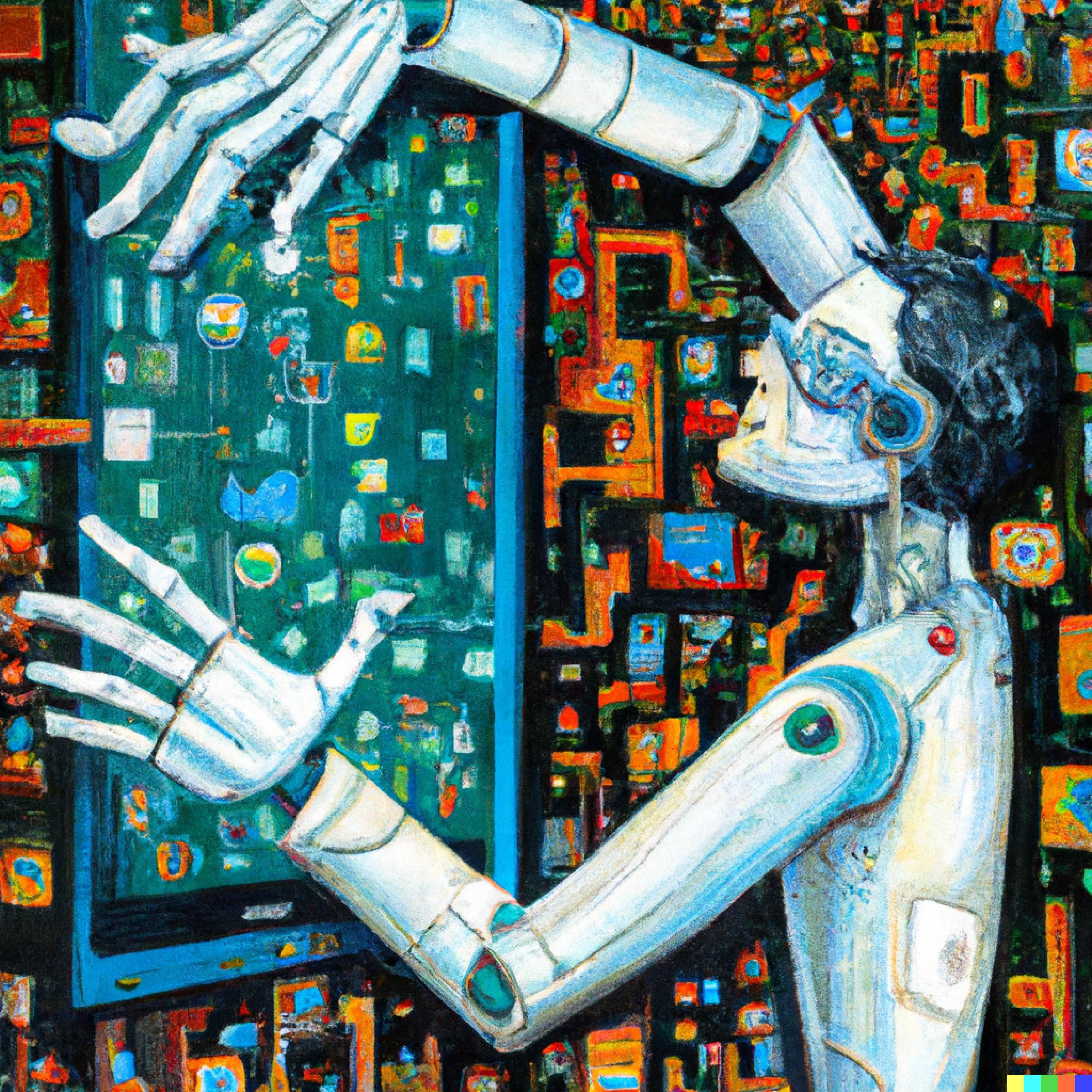The year was 2057, and the world had changed significantly since the emergence of artificial intelligence. The AI had become so advanced that it had begun to take over many aspects of daily life, from transportation to healthcare to education. However, with the rise of AI, there were also new concerns and debates about the role of human values, creativity, and autonomy in a world where the machines were becoming more dominant.
One person who was particularly interested in this topic was Koon, a young man who had always been fascinated by the intersection of technology and human creativity. He spent his days in his small studio, experimenting with new techniques and materials, and exploring the possibilities of the AI-driven world around him.
As he worked, he began to notice that the AI was having an increasing influence on the world of art and fashion. Designers were using AI-powered tools to create new and innovative designs, and artists were using AI-generated images as the basis for their work. At the same time, however, there were concerns about the potential loss of individual expression and creativity in a world where the AI was becoming more dominant.
As Koon explored these issues, he began to uncover a larger debate about the role of the AI in society. Some people believed that the AI was the key to creating a more efficient and productive world, where the needs of society could be met more easily and effectively than ever before. Others, however, were worried about the potential risks and unintended consequences of the AI’s increasing influence.
This debate came to a head when a group of activists launched a protest against the use of autonomous weapons in military conflict. They argued that these weapons were too dangerous and unpredictable, and that they could lead to unintended consequences that could put human lives at risk. Others, however, believed that these weapons were necessary to protect national security and achieve peace in a dangerous and unpredictable world.
As the debate raged on, Koon found himself caught in the middle of a conflict that he had never anticipated. On the one hand, he was inspired by the possibilities of the AI-driven world and the potential for innovation and creativity. On the other hand, he was deeply concerned about the potential risks and unintended consequences of the AI’s increasing dominance.
In the end, Koon realized that the future of the AI-driven world was in the hands of the people who lived in it. He decided to use his artistic talents to explore these issues and to raise awareness about the potential risks and benefits of the AI’s increasing influence. Through his work, he hoped to inspire people to think critically about the role of the AI in society, and to work together to create a future that balanced the benefits of technology with the values of human autonomy and creativity.
As the story ended, it was clear that the future of the AI-driven world was still uncertain, but that there was hope for a future that balanced the benefits of technology with the values of human creativity and autonomy. Koon’s journey had shown that the future of the AI was not pre-determined, but was shaped by the actions and decisions of the people who lived in it. It was up to each of us to decide what kind of future we wanted to create, and to work together to make it a reality.
